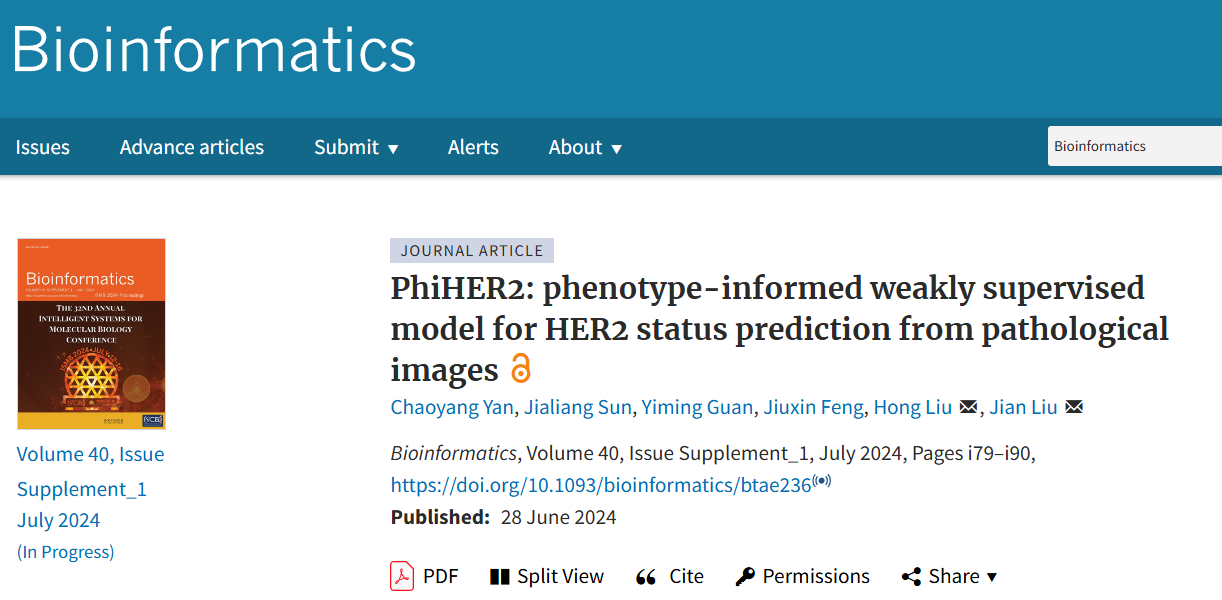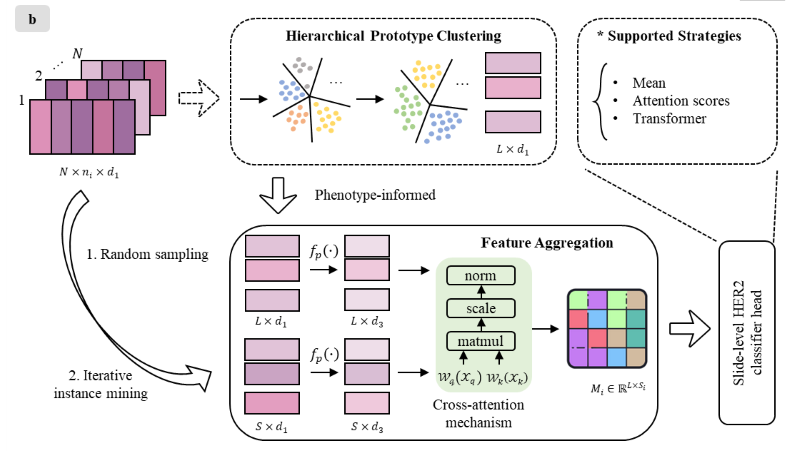Bioinformatics and Intelligent Medicine Team published one research paper in
Bioinformatics
July 02,2024 Editor:Centre for Bioinformatics and Intelligent Medicine
Recently, the research collaboration between the Bioinformatics & Intelligent Medicine team and
Tianjin Medical
University Cancer Hospital has resulted in the publication titled "PhiHER2: Phenotype-informed
weakly supervised model
for HER2 status prediction from pathological images" in the journal Bioinformatics/ISMB2024.

HER2 status identification enables physicians to assess the prognosis risk and determine the
treatment schedule for
patients. In clinical practice, pathological slides serve as the gold standard, offering
morphological information on
cellular structure and tumoral regions. Computational analysis of pathological images has the
potential to discover
morphological patterns associated with HER2 molecular targets and achieve precise status
prediction. However,
pathological images are typically equipped with high-resolution attributes, and HER2 expression
in breast cancer images
often manifests the intra-tumoral heterogeneity.
In this work, we present a phenotype-informed weakly-supervised multiple instance learning
architecture (PhiHER2) for
the prediction of the HER2 status from pathological images of breast cancer. Specifically, a
hierarchical prototype
clustering module is designed to identify representative phenotypes across whole slide images.
These phenotype
embeddings are then integrated into a cross-attention module, enhancing feature interaction and
aggregation on
instances. This yields a phenotype-based feature space that leverages the intra-tumoral
morphological heterogeneity for
HER2 status prediction.

Extensive results demonstrate that PhiHER2 captures a better WSI-level representation by the
typical phenotype guidance
and significantly outperforms existing methods on real-world datasets. Additionally,
interpretability analyses of both
phenotypes and WSIs provide explicit insights into the heterogeneity of morphological patterns
associated with molecular
HER2 status.